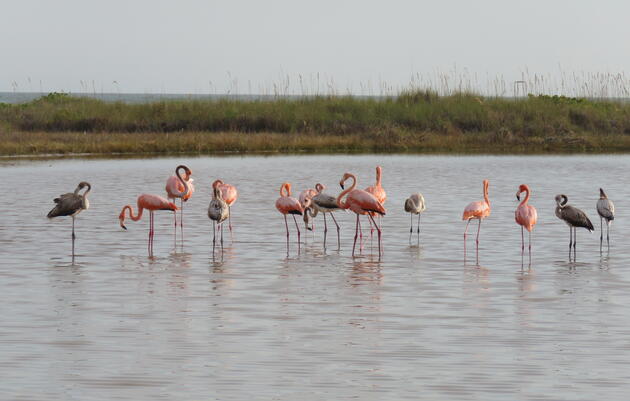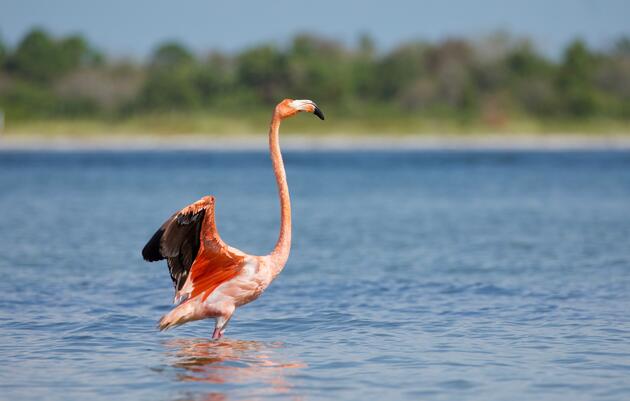We really appreciate your concern about the welfare of Peaches, the American Flamingo that was recently rescued and released (more info here). Hurricane Idalia has likely been a very stressful event for all the displaced flamingos, and we are so fortunate to have facilities like the Seaside Seabird Sanctuary, a wonderful group of professionals and volunteers who do tremendous work and deserve all of our praise and support. Thanks to their efforts, Peaches is on the mend. A tracking device will help us learn more about Peaches' recovery as well as more about how the species is faring in Florida.
Hearing your concerns, we wanted to provide additional information about bird banding and tracking.
More than 1.2 million birds are safely banded each year in the United States, some mandated by law. There are over 1,000 flamingos banded each year globally using the same techniques. The bands are each designed specifically to each species to ensure comfort, durability, and to cause no health or well-being issues for the birds. They require an adjustment period for each bird to become accustomed to them. Importantly, the behaviors that have been described by Peaches are not unnatural. Preening is a natural behavior in birds in which they spend a large amount of time doing to keep their body and feathers in good condition. Since the bands are new, Peaches will be preening them regularly. Peaches has also been seen foraging and flying normally since release.
The satellite transmitter only appears to be bulky—there is a needed surface area for the solar panels—but there is no heavy battery inside and it works using a solid state capacitor for power. It also has a neoprene liner to ensure comfort against the leg skin.
The relative weight of the transmitter to body weight would be similar to a person holding a stick of butter.
This transmitter was adapted by experts from the same design used on endangered Whooping Cranes for the past couple of decades with no issues. The same transmitter was also used on Conchy, the first rescued and banded flamingo in Florida, a bird that was monitored for many weeks during his recovery and was also seen preening the transmitter frequently at first but then became accustomed to the bands. We monitored Conchy over the next couple of years with no observed problems seen with either bands. The transmitter helped us to locate Conchy in the wild when he became very ill from a liver fluke infection after his first release. Without it, Conchy would have undoubtedly succumb to his infection and liver failure. This transmitter on Peaches will allow professionals to monitor and try to ensure the good health of Peaches going forward.
Some have suggested capturing Peaches to try to remove the leg bands placed for its monitoring. This would not only be stressful and risk injuring the flamingo, it would also be illegal.
We appreciate everyone's passion for flamingos! We all share that in common and only want the best for them and continue to work diligently for their recovery in the United States. The information from Peaches is needed to protect flamingos not only in the United States, but across their entire range.







